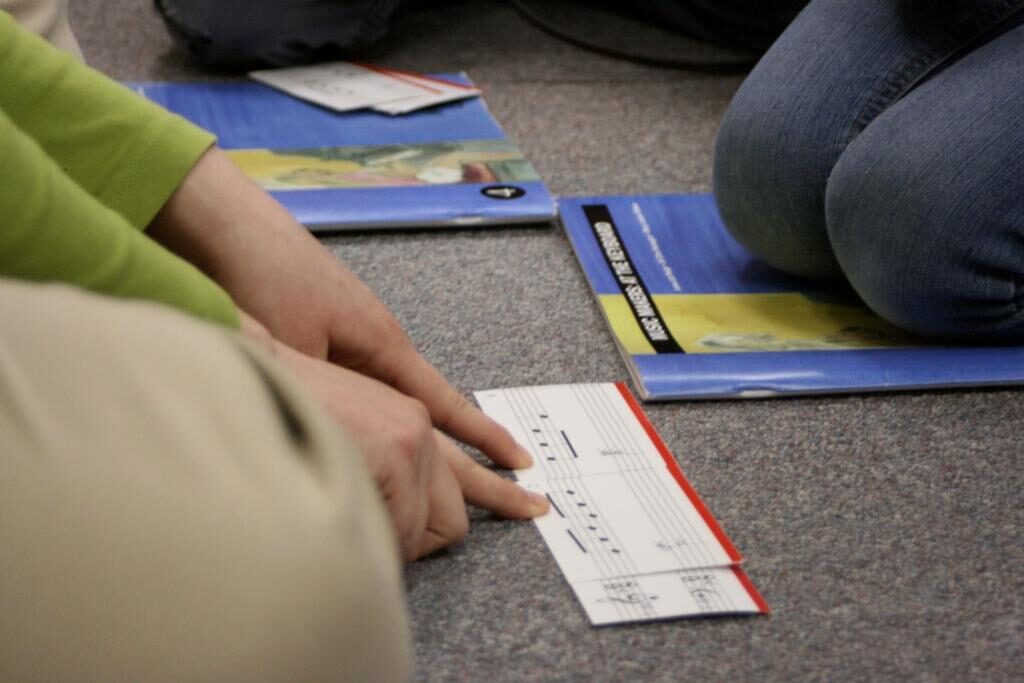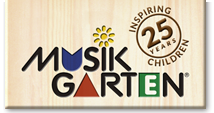In this third installment from our series on Music Literacy at the Keyboard and children’s music programs, we will explore how setting a good foundation of posture, arm and hand position, and finger technique are vital to instrumental education. Proper posture with any instrument has various benefits for the musician, while improper technique can even compromise the ability to perform. Establishing good habits from the very beginning and reinforced by both children’s music teachers and parents/caretakers alike, helps to prevent the necessity later to correct ingrained habits.
Start by Teaching Piano Away from the Keyboard
Start by preparing the body to establish good posture and hand and arm position. This helps piano students to concentrate on their bodies instead of the temptation of sounding the keyboard. In our last installment, we established how a foundation of singing familiar songs first helps the child better understand the keyboard once it is introduced afterward. Initiating these things away from the piano ensures the grounding of good posture and positioning, as well as establishing songs and patterns in the body.

Tips for Establishing Good Posture at the Piano Keyboard
Hand Position
- Ask the student to swing their arms back and forth gently while standing.
- Bend the elbows naturally at the end of the swinging motion.
- Point out the curved hands and fingers position at the end of the motion.
- Repeat the motions at a table, ending with the hands positioned to play on the table.
- Keep in mind that proper hand position is dependent upon good sitting posture and sitting at the right height.
Sitting Posture
- Sit with an upright back, with shoulders held comfortably back
- Identify and correctimproper extremes, such as slumping or stiff, raised shoulders, tense back and stomach muscles, or collapsed wrists.
Chair and Keyboard Height
- Chair height should allow feet to be flat on the floor or on a little stool.
- Appropriate keyboard height is achieved when the forearm is parallel to the floor and fingers are laying comfortably on the keyboard.
- Watch for and correct raised elbow or shoulder, and/or wrist bent upwards.
Good posture and positioning is important for beginner piano players. Not only for the ability to approach the keyboard comfortably, but also to prevent potential long-term injuries that would inhibit the ability to play. Parents and teachers should help the student remember that good habits will serve them well for their entire lives.
Approach to Finger Technique for Piano Beginners
Once the body has been prepared with proper posture, children can then move to the keyboard area. Warm up activities, beginning first with one hand and then the next helps to exercise the fingers and thumbs. Following a foundation of Do-mi-sol, three finger pieces followed by five finger pieces (tetra chord) sets the stage for one-note extensions and eventually leads to chords and scale-playing.
Because some children will have a repertoire of familiar songs, they can begin accompanying their own singing right away with open fifths. Since they have a foundation in aural development through singing, they are gradually able to figure out how to play patterns and songs in multiple keys. Melody is learned first on one hand, and then the other. Once children can comfortably play the melody, chordal accompaniments are introduced through the familiar harmony patterns from their song repertoire.
Good posture, hand position, and finger technique are essential to learning piano. By first learning away from the keyboard, children can focus on these elements separately. With a foundation of songs from early childhood music classes, as well as encouragement from teachers and caretakers, the beginning piano player has the best chance of success and lifelong love for the instrument.
Much of the content for this post was based on the introduction to Music Makers: at the Keyboard, childhood music curriculum developed by Musikgarten.
Interested in knowing more about Musikgarten’s Music Makers: at the Keyboard material? Click this link to attend a Free information session.





